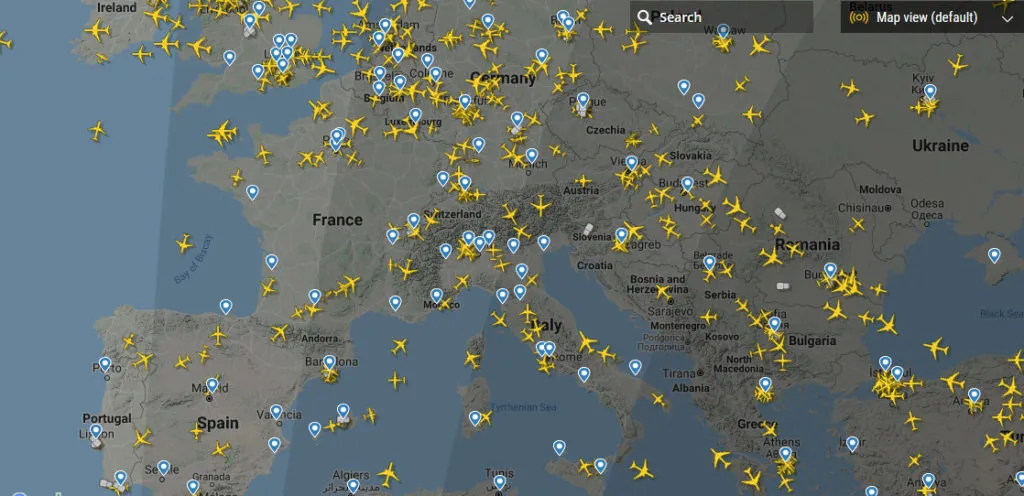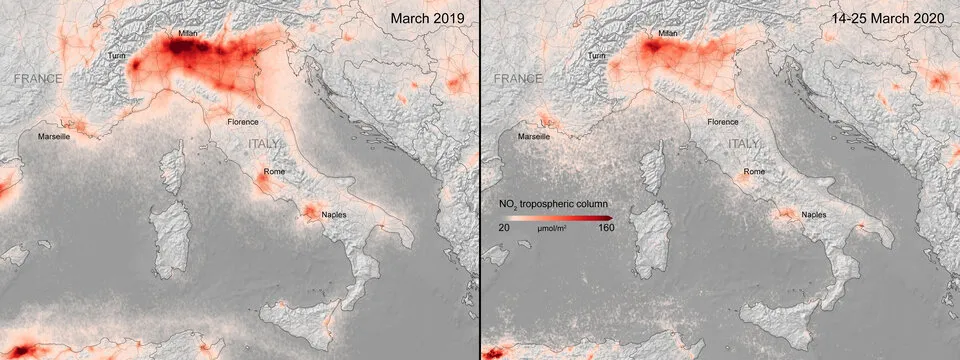
Improvement in air quality also over Europe, learning for global heating?
The anti-corona measures that were implemented by many European countries in the course of March led to a lockdown of cities, regions and even countries. With the nomination to an exclusion area by 10 March 2020 the territory of Italy became the first country to be locked. Others followed soon thereafter. Meanwhile almost every country in Europe is affected by measures to curb the spread of the corona infection. The implemented actions led to a significant reduction of transport (on the road and in the air), an extensive ban of trade and a shut down of industries resulting in a hefty diminished demand for energy and fossil fuels.
Similar to China, new data based on observations from the Copernicus Sentinel-5P satellite, operated by ESA, have shown significant reductions of nitrogen dioxide concentrations over several urban regions across Europe, among them the metropolitan areas of Paris, Milan and Madrid. The maps at hand compare the average nitrogen dioxide concentration of March 2019 with the NO2 concentration from 14-25 March 2020 for the mentioned agglomeration areas. The 10 days time frame in March 2020 is necessary to average out meteorological variability and see the human induced changes in the atmosphere. Hence, the substantial decrease of NO2 concentration can be explained by the anti-corona actions. Considering that the range of anti-corona measures was realized gradually starting around mid March, the atmospheric response to the decreasing emissions is quick.
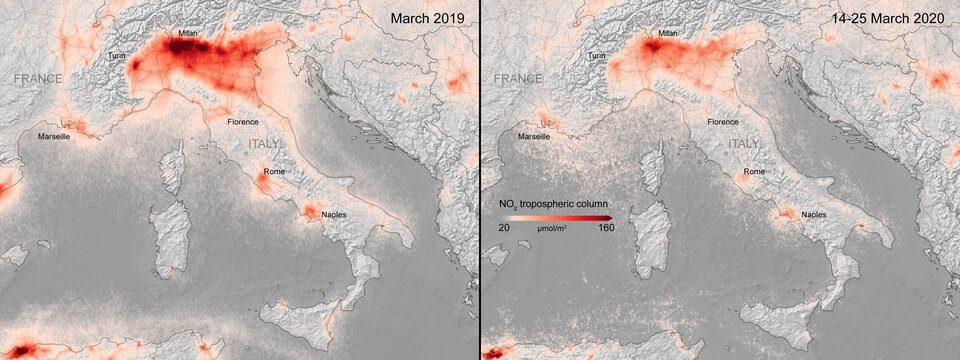
Air quality over Europe – Nitrogen dioxide concentrations over Italy in March 2019 (averaged) in the left panel and from 14 – 25 March 2020 in the right panel. Source: ESA
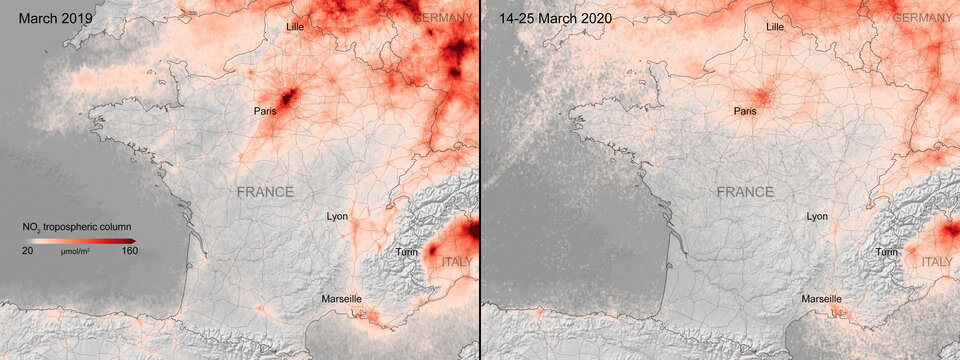
Air quality over Europe – Nitrogen dioxide concentrations over France in March 2019 (averaged) in the left panel and from 14 – 25 March 2020 in the right panel. Source: ESA
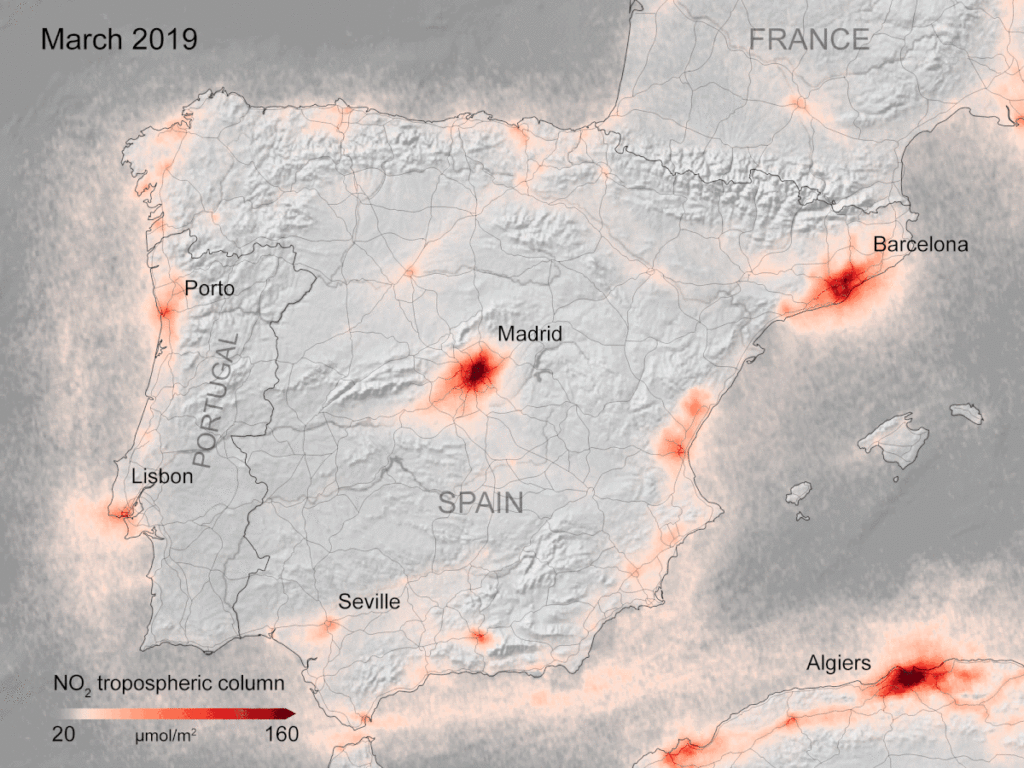
Air quality over Europe – Nitrogen dioxide concentrations over Spain in March 2019 (averaged) and from 14 – 25 March 2020. Source: ESA
The reduced burning of fossil fuels in China has cut carbon dioxine emissions by 25% over a four-week-period resulting in cleaner air at relatively low economic costs (The Guardian). Considering the drop of CO2 emissions in Europe, the United States and other parts of the world might be possible that 2020 will register the first fall of CO2 emissions after the financial crisis in 2008. However, in the course of the corona pandemic political and corporate authorities have been taking radical emergency measures on the advice of scientists to protect human beings. It will be crucial that related to global heating politics act with similar decisiveness and purposefulness on behalf of the human population.
Articles: Guardian, Carbon Brief, Euractiv (German)
Did you like the article? Read more and subscribe to our monthly newsletter!






